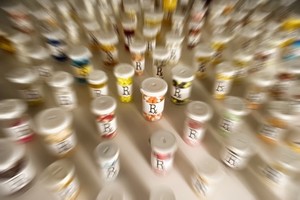Reference pricing can produce substantial savings, but what conditions are the most likely to result in cost savings? This was a question addressed by Brekke and co-authors from the University of Minho in Portugal in their Working Paper [1].
Effect of reference pricing on generics entry
Generics/Research
|
Posted 26/06/2015
 0
Post your comment
0
Post your comment

In reference-based pricing, drugs are classified into clusters based on generics groups, related drug groups or groups according to similar therapeutic effects. The payer sets a reference price for each cluster based on, for example, either the lowest or the average price of drugs in that group. The reference price defines the maximum reimbursement for all products in the group. Only drugs that are priced at or below the reference price are subsidized; drugs that are more expensive must be paid for – either in part or completely – by the patient.
Reference pricing in drug reimbursement was first formally adopted in Germany in 1989, and has since spread throughout Europe as well as to Australia, New Zealand and Canada [2].
Several studies have shown that reference pricing stimulates competition between brand-name drugs and generics, and triggers price reductions by brand-name manufacturers to prevent loss of market shares to generics makers. However, only a few studies have considered the impact of reference pricing on generics entry, and results from these have been mixed.
To study the impact of reference pricing on generics entry, Brekke and co-authors developed a novel Salop-type model where a brand-name producer competes with several generics makers in terms of prices. In their analysis they considered two types of consumers: (i) brand-biased consumers who choose between brand-name drugs and generics, and (ii) brand-neutral consumers who choose between the different generics. Brand-biased consumers have a preference for the brand-name drug and only buy a generic alternative if it is sufficiently cheaper. Brand-neutral consumers, on the other hand, always prefer a generic drug if it is cheaper than the brand-name drug.
Conflict of interest
The authors of the research report/paper [1] did not provide any conflict of interest statement.
Editor’s comment
Readers interested to learn more about reference pricing systems in Europe are invited to visit www.gabi-journal.net to view the following manuscript published in GaBI Journal:
Reference pricing systems in Europe: characteristics and consequences
Readers interested in contributing a research or perspective paper to GaBI Journal – an independent, peer reviewed academic journal platform – please send us your submission here.
Related articles
Effect of price caps and reference pricing on generics entry
Effect of co-insurance and reference pricing on generics entry
References
1. Brekke KR, Canta C, Straume OR. Does reference pricing drive out generic competition in pharmaceutical markets? Evidence from a policy reform. NIPE Working Papers Series, 2015. [cited 2015 Jun 26]. Available from: www.nipe.eeg.uminho.pt/Default.aspx?tabid=13&pageid=274&lang=en-US
2. GaBI Online - Generics and Biosimilars Initiative. Reference pricing and generics in Finland [www.gabionline.net]. Mol, Belgium: Pro Pharma Communications International; [cited 2015 Jun 26]. Available from: www.gabionline.net/Generics/Research/Reference-pricing-and-generics-in-Finland
Permission granted to reproduce for personal and non-commercial use only. All other reproduction, copy or reprinting of all or part of any ‘Content’ found on this website is strictly prohibited without the prior consent of the publisher. Contact the publisher to obtain permission before redistributing.
Copyright – Unless otherwise stated all contents of this website are © 2015 Pro Pharma Communications International. All Rights Reserved.
Most viewed articles
The best selling biotechnology drugs of 2008: the next biosimilars targets
Global biosimilars guideline development – EGA’s perspective
Related content
Japan’s drug shortage crisis: challenges and policy solutions
Saudi FDA drug approvals and GMP inspections: trend analysis
Generic medications in the Lebanese community: understanding and public perception
Community pharmacists’ understanding of generic and biosimilar drugs: Lebanon case study
Generic medications in the Lebanese community: understanding and public perception

Generics/Research Posted 23/01/2024
Community pharmacists’ understanding of generic and biosimilar drugs: Lebanon case study

Generics/Research Posted 08/09/2023
The best selling biotechnology drugs of 2008: the next biosimilars targets








Post your comment